Top 5 Shopping Management Software Solutions for 2023
The Powerhouse Duo: Google Shopping & Feed Management Software
Picture this: you’re scrolling through Google, searching for that perfect pair of running shoes. Among the results, you notice product images, ratings, and prices conveniently displayed, beckoning you to click. Welcome to the world of Google Shopping, the search giant’s dedicated service for consumers looking to make savvy purchasing decisions online. But have you ever stopped to wonder what’s behind the curtain for retailers? How do they manage to showcase their products so effectively? The answer lies in the powerful combination of Google Shopping and feed management software.
Unlocking the Potential with Google Shopping
Google Shopping is not just a digital storefront; it’s a powerful marketing tool. Unlike traditional search results, which rely solely on text and metadata, Google Shopping adds an extra layer by showcasing images, product details, and even reviews. This visual, information-rich approach boosts engagement and helps drive higher click-through rates (CTR), ultimately leading to more conversions. In essence, Google Shopping levels up your advertising game, putting your products front and center in a highly competitive digital marketplace.
Simplifying Complexities with Feed Management Software
Now, let’s talk about the backstage hero: feed management software. Managing an online store is no small feat, especially when you have a vast array of products. Keeping track of inventory, updating product details, and optimizing listings for multiple channels can be a Herculean task. This is where feed management software shines. It streamlines the process of updating and optimizing product feeds for various platforms, including Google Shopping. With features like bulk editing, automated scheduling, and real-time analytics, these software solutions offer a centralized hub for all your product feed needs.
Together, Google Shopping and feed management software create a symbiotic relationship that brings unparalleled efficiency and visibility to your eCommerce operations. And as we venture further into the digital age, leveraging these tools becomes not just advantageous, but essential. So, are you ready to harness their full potential?
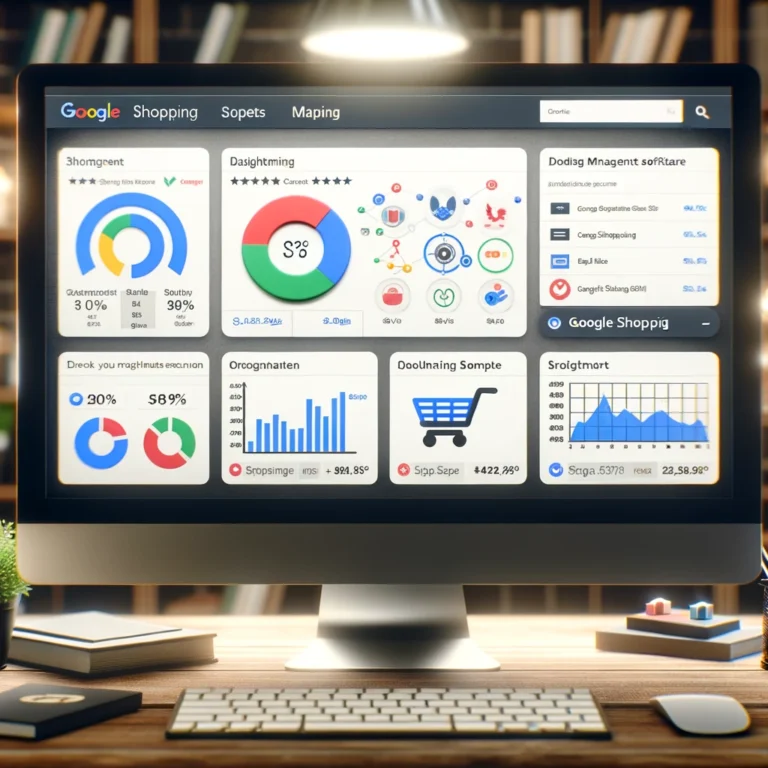
Feedoland
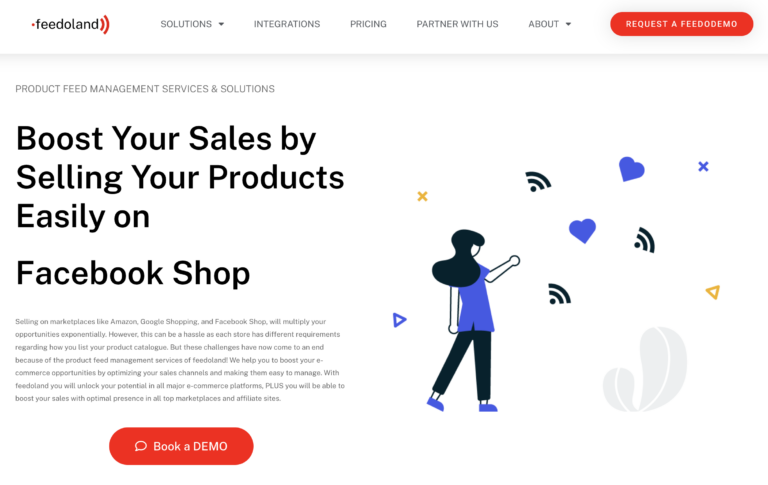
Established in 2019, Feedoland has swiftly risen to prominence in its industry. Embodying flexibility at its core, the company has tailored its services to meet the dynamic needs of today’s businesses. This adaptability hasn’t gone unnoticed, earning them the trust of top-tier clients such as Samsung, L’Oreal, Amazon, MercadoLibre, among others. With a global footprint, Feedoland proudly boasts a presence on all major continents, reflecting its commitment to delivering excellence worldwide.
Pros:
- Custom Solutions with Value: Feedoland offers custom solutions specifically designed for individual business needs. For a competitive price, businesses can enjoy tailored services ensuring flexibility and adaptability for diverse operational demands.
- User-Friendly Interface at No Extra Cost: The software’s intuitive design ensures that even those new to the platform can navigate it with ease. This user-centric approach comes without any additional costs.
- Reliable Support Worth Every Penny: Businesses can access prompt and knowledgeable customer support, minimizing downtime and ensuring swift resolution of issues.
- Scalability for Every Business Size: The software’s adaptability means it can grow with your business. Whether you’re a startup or a multinational, for a standard fee, Feedoland ensures you’re covered.
- Advanced Analytics for Informed Decisions: Feedoland provides businesses with in-depth insights and analytics. This feature is essential for those looking to make data-driven decisions and stay ahead of the competition.
Cons:
- Initial Setup Time: While Feedoland offers numerous benefits, it might require a bit of time for complete setup and integration, especially for larger businesses.
Conclusion: Feedoland presents a comprehensive suite of features that cater to a wide range of business needs. With competitive pricing for its top-notch services and only a minor setback in initial setup time, it remains a commendable choice for businesses aiming for growth and efficiency.
Discover Feedoland
Channable
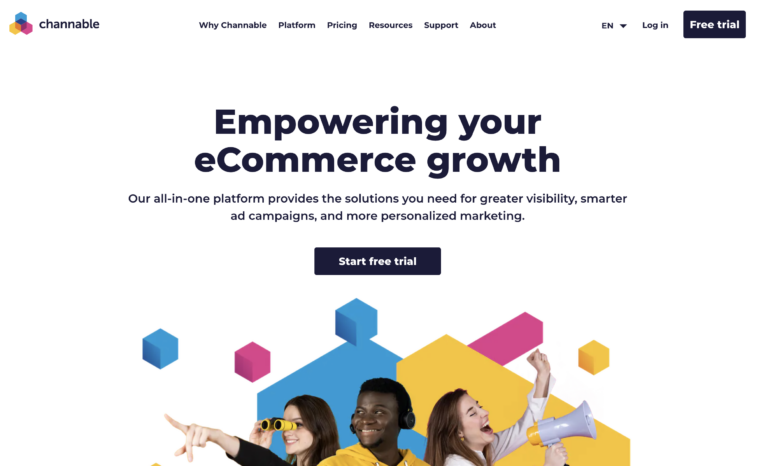
Channable is a dynamic data feed management and PPC tool designed for online retailers and marketers. It facilitates the integration of product feeds into various online marketplaces, advertising platforms, and affiliate networks.
Pros:
1. Versatile Integrations: Channable boasts a wide range of integrations with both global and local online marketplaces, making it easier for businesses to expand their reach.
2. User-friendly Interface: The platform is known for its clear and intuitive dashboard, making feed management more accessible even for those without technical expertise.
3. Advanced Rules Engine: Users can easily set up rules to optimize and customize their feeds, ensuring that product listings are always up-to-date and relevant.
4. PPC Automation: Beyond feed management, Channable offers automated PPC campaign creation and optimization, a feature that can be invaluable for driving traffic and sales.
5. Responsive Customer Support: Many users commend the responsive and knowledgeable customer support team, which can be crucial when addressing feed-related issues.
Cons:
1. Pricing: While Channable offers a range of pricing tiers, some smaller businesses might find it a bit pricey, especially when starting.
Conclusion: Channable is a robust and comprehensive tool for businesses looking to streamline their product feed management and enhance their online advertising efforts. While it might take some time to fully harness its capabilities, the benefits it offers, especially for larger retailers or those expanding into multiple channels, are undeniable. As with any platform, potential users should evaluate it in the context of their specific needs and budget.
DataFeedWatch
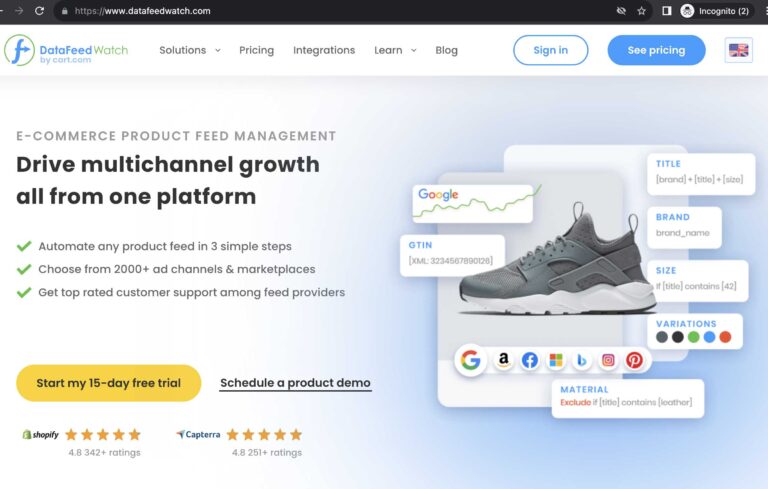
DataFeedWatch is a comprehensive data feed management platform tailored for online retailers aiming to optimize and distribute their product feeds across various shopping channels and marketplaces.
Pros:
- Broad Integration Range: DataFeedWatch offers integrations with a vast array of online marketplaces and shopping channels, accommodating both international and regional preferences.
- Simplified User Experience: The platform prides itself on its user-centric design, ensuring that even those new to feed management can navigate with ease.
- Customizable Feed Rules: Users have the flexibility to set up rules that allow them to modify and enhance their feeds based on specific criteria, ensuring optimal product listings.
- Performance Analytics: The integrated analytics tool provides insights into feed performance, helping users refine their strategies and make informed decisions.
- Dedicated Support: The customer support team is often highlighted for its prompt responses and in-depth knowledge, assisting users in resolving any potential issues.
Cons:
- Depth of Features: While DataFeedWatch covers most bases, some advanced users might desire additional features or more granular control over certain aspects of feed management.
Conclusion: DataFeedWatch stands out as a reliable and effective solution for businesses of various sizes looking to enhance their e-commerce presence across multiple channels. It’s essential, however, for potential users to delve into the platform’s offerings and evaluate its fit based on their unique requirements and budgetary considerations.
GoDataFeed
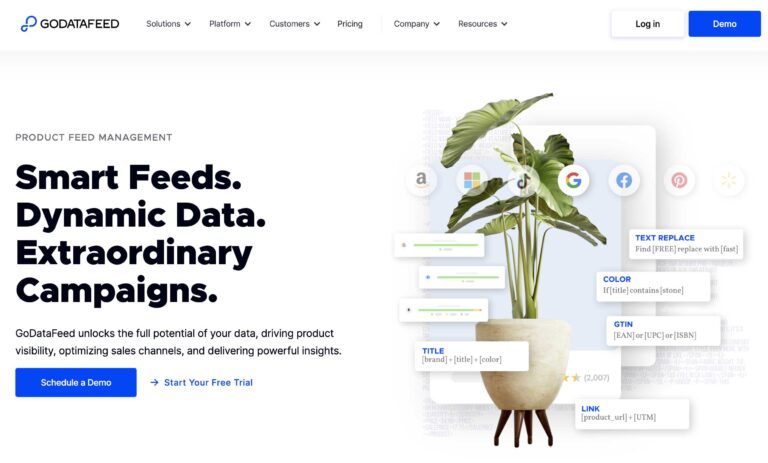
In the realm of e-commerce, the seamless integration and optimization of product feeds can be the linchpin of a successful online marketing strategy. GoDataFeed sits at this crucial intersection, offering an advanced data feed management solution that promises to simplify the syndication, optimization, and analytics of product listings across a multitude of online sales channels. Born out of the need to help online retailers reach wider audiences without the complexities often associated with multichannel marketing, GoDataFeed has been tailored to streamline and automate many of the processes involved.
Pros:
- Multichannel Syndication: GoDataFeed supports a vast array of shopping channels, marketplaces, and comparison search engines, ensuring a broad reach for products.
- Feed Optimization Tools: The platform offers robust tools that allow users to refine product listings, ensuring they are both accurate and appealing to potential customers.
- Order Syncing: A standout feature is its order management capabilities, where orders from marketplaces can be synced back to the merchant’s store, simplifying the tracking process.
- Advanced Analytics: With an integrated analytics suite, users can get insights into product performance, helping them tweak their strategies for better ROI.
- Helpful Support: The platform is lauded for its responsive and knowledgeable customer support, which can guide users through any challenges they might encounter.
Cons:
- Pricing: While GoDataFeed offers a range of plans, some users might find the costs a bit steep, especially when additional features are factored in.
- Complexity for Beginners: Due to its extensive features, newcomers might face a steep learning curve, especially without prior experience in feed management.
- Integration Hiccups: Some users have reported occasional glitches with specific integrations, though these are typically addressed promptly.
Conclusion: GoDataFeed presents itself as a comprehensive solution for e-commerce businesses that aim to magnify their online visibility and sales. While it offers a plethora of advanced features, potential users should invest time in understanding its capabilities fully. With the right approach, GoDataFeed can undoubtedly become a pivotal tool in an online retailer’s arsenal, driving both traffic and conversions.
Feedonomics
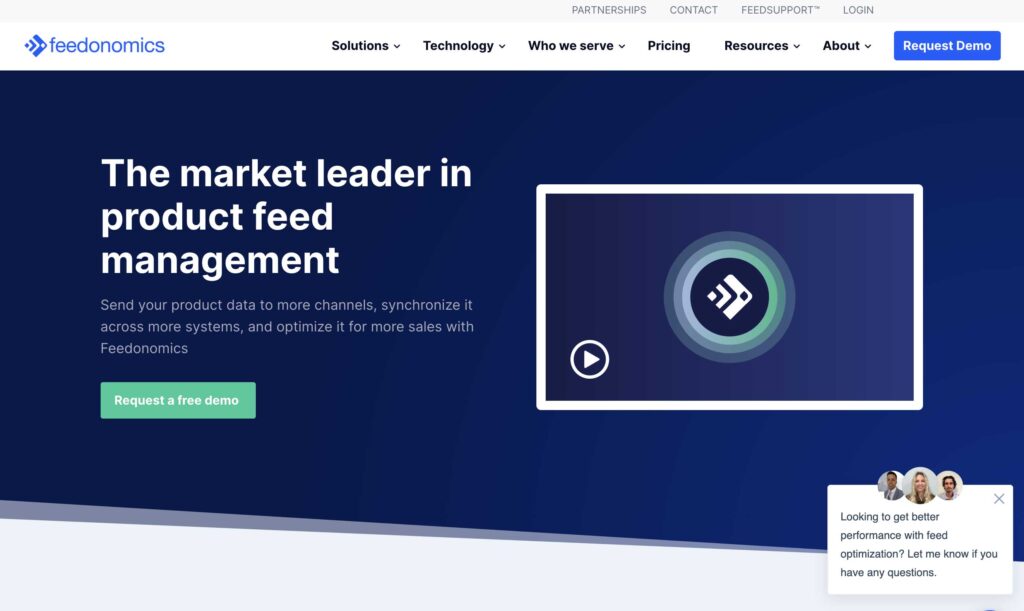
In the vast digital landscape of e-commerce, the ability to effectively manage and optimize product listings across multiple platforms can be the difference between success and obscurity. Feedonomics steps into this space, aiming to be the beacon for online retailers navigating the intricacies of multi-channel marketing. Designed as a full-service data feed optimization platform, Feedonomics combines advanced technology with expert service, striving to empower businesses to maximize their online presence and performance.
Pros:
- Comprehensive Integration Options: Feedonomics offers integrations with a wide variety of marketplaces, advertising platforms, and affiliate networks, ensuring businesses have ample avenues to showcase their products.
- Robust Feed Optimization: The platform provides powerful tools and rules for feed customization, allowing businesses to enhance their product listings for better visibility and conversion.
- Full-Service Approach: One of Feedonomics’ unique selling points is its blend of technology and human expertise. Their team assists in feed setup, optimization, and troubleshooting, offering a hands-on approach.
- Real-time Updates: The platform supports real-time feed updates, ensuring product listings remain current and accurate across all channels.
- Advanced Analytics Dashboard: Users can gain valuable insights into feed performance, click-through rates, and sales metrics, helping them fine-tune their strategies.
Cons:
- Cost Implications: The full-service nature of Feedonomics, while beneficial, might come with a higher price tag, potentially making it less accessible for smaller retailers.
- Complexity: The platform’s extensive features can be overwhelming for beginners, requiring a learning phase to harness its full potential.
- Integration Limitations: While Feedonomics covers a wide range of platforms, there might be specific niche channels or newer platforms that are not immediately supported.
Conclusion: Feedonomics emerges as a formidable player in the realm of data feed management and optimization. Its blend of technological prowess and hands-on expert service sets it apart. While the platform might require an investment in both time and resources, for many online retailers, the potential returns in terms of enhanced visibility, traffic, and sales could make it a worthwhile endeavor. As always, it’s essential for businesses to assess their specific needs and weigh the platform’s offerings against their goals and budget.
Conclusion
In the ever-evolving e-commerce landscape, data feed management platforms have become indispensable tools for businesses aiming to optimize their online presence across multiple channels. Each platform brings its unique strengths to the table:
GoDataFeed, DataFeedWatch and GoDataFeed offer robust solutions packed with features that cater to a broad spectrum of needs. Their extensive integrations, advanced analytics, and customization capabilities make them particularly well-suited for established large-scale enterprises looking to further refine and expand their online strategies.
Feedonomics, with its full-service approach, combines technology with human expertise. It’s ideal for businesses that are established and are looking for a blend of automation and personalized service to elevate their e-commerce game.
Feedoland, on the other hand, may stand out as the go-to choice for newcomers or businesses seeking a more tailored solution. Its user-friendly interface and customizable offerings make it a compelling choice for starters or companies aiming for a bespoke approach to feed management.
In conclusion, while larger, already established companies might lean towards the comprehensive feature sets of GoDataFeed, DataFeedWatch, and Feedonomics, those just beginning their e-commerce journey or seeking custom solutions might find Feedoland to be a more fitting ally. Regardless of the platform chosen, the key lies in aligning the platform’s capabilities with the specific needs and goals of the business.
